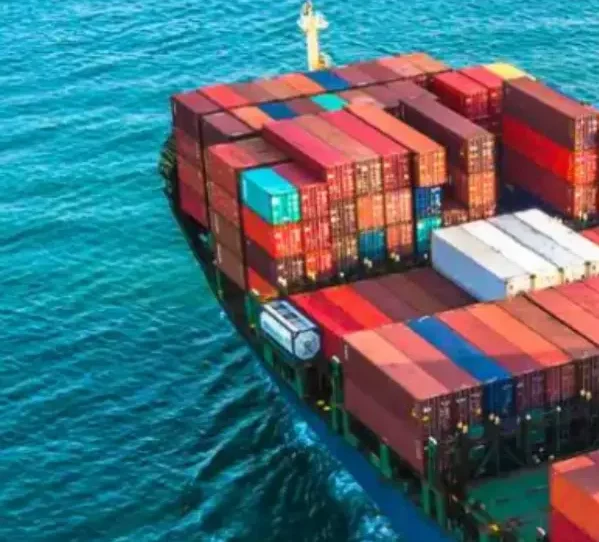Why NVOCCs Should Use Carrier Contract Management Tools
In the ever-evolving maritime shipping industry, Non-Vessel Operating Common Carriers (NVOCCs) face mounting pressure to streamline operations, reduce costs, and meet customer expectations for timely and transparent shipping services. As the global supply chain becomes more complex, the need for advanced tools to manage ocean freight contracts effectively has never been greater. This is where carrier contract management tools come into play. These systems are essential for NVOCCs aiming to maintain a competitive edge in today’s dynamic market.
The Role of NVOCCs in the Maritime Industry
Before diving into the benefits of carrier contract management tools, it’s important to understand the pivotal role NVOCCs play in the maritime shipping industry. Unlike vessel operators, NVOCCs act as intermediaries between shippers and carriers. They negotiate contracts, consolidate cargo, and ensure seamless transportation of goods across international waters. This position requires meticulous management of contracts, rates, and schedules to ensure profitability and customer satisfaction.
However, the reliance on traditional methods such as spreadsheets, manual documentation, and email communications can hinder efficiency. Carrier contract management tools offer a modern solution to these challenges, enabling NVOCCs to focus on their core competencies.
What Are Carrier Contract Management Tools?
Carrier contract management tools are specialized software solutions designed to help NVOCCs manage their contracts with ocean carriers effectively. These tools provide features such as:
- Centralized contract storage: Securely store all carrier agreements in a single, easily accessible platform.
- Rate management: Automate the process of updating, comparing, and applying ocean freight rates.
- Compliance monitoring: Ensure adherence to regulatory requirements and contractual obligations.
- Real-time data access: Gain instant access to current rates, schedules, and carrier details.
By leveraging these features, NVOCCs can transform their operations, improving both efficiency and accuracy.
Benefits of Carrier Contract Management Tools for NVOCCs
Enhanced Rate Transparency
One of the most significant challenges for NVOCCs is maintaining visibility over carrier rates, which often vary depending on routes, cargo types, and market conditions. Carrier contract management tools provide real-time rate transparency, allowing NVOCCs to:
- Compare rates across multiple carriers.
- Identify the most cost-effective options for their customers.
- Avoid costly errors or overcharges.
With accurate and up-to-date rate information, NVOCCs can make informed decisions that directly impact their bottom line.
Streamlined Contract Management
Managing contracts manually can be a time-consuming and error-prone process. Carrier contract management tools simplify this by:
- Automating contract updates and amendments.
- Providing alerts for contract renewals or expiration dates.
- Ensuring consistent application of agreed-upon terms.
This automation reduces administrative burdens, freeing up resources for more strategic initiatives.
Improved Customer Service
In today’s competitive landscape, providing exceptional customer service is crucial for retaining clients. Carrier contract management tools enable NVOCCs to offer:
- Faster rate quotations.
- Real-time tracking of shipments.
- Accurate information on transit times and costs.
By delivering precise and timely information, NVOCCs can build stronger relationships with their customers.
Regulatory Compliance
The maritime industry is heavily regulated, and non-compliance can result in hefty fines or legal complications. Carrier contract management tools help NVOCCs stay compliant by:
- Monitoring adherence to international shipping regulations.
- Providing audit trails for all transactions.
- Ensuring that contracts meet legal and regulatory standards.
These features reduce the risk of non-compliance, giving NVOCCs peace of mind.
Cost Savings
Inefficiencies in contract management often lead to unnecessary costs, such as penalties for missed deadlines or overpayment due to outdated rates. Carrier contract management tools eliminate these inefficiencies by:
- Providing accurate rate calculations.
- Automating billing processes.
- Reducing manual errors.
Over time, these cost savings can significantly enhance an NVOCC’s profitability.
Challenges Without Carrier Contract Management Tools
NVOCCs that rely on outdated systems often face challenges such as:
- Data silos: Fragmented information spread across multiple systems makes it difficult to access critical data.
- Slow response times: Manual processes delay rate quotations and contract amendments.
- Increased errors: Human error in manual data entry can result in financial losses and strained carrier relationships.
- Limited scalability: Traditional methods cannot keep up with the growing volume and complexity of global shipping operations.
Carrier contract management tools address these issues head-on, providing a robust foundation for growth and efficiency.
Key Features to Look for in Carrier Contract Management Tools
When selecting a carrier contract management solution, NVOCCs should prioritize tools with the following features:
- User-friendly interface: Ensure ease of use for your team.
- Customizable dashboards: Tailor the platform to meet your specific needs.
- Integration capabilities: Seamlessly connect with other software systems, such as ERP or CRM platforms.
- Advanced analytics: Gain insights into performance metrics, trends, and opportunities for optimization.
- 24/7 support: Access technical assistance whenever needed.
The Future of NVOCC Operations with Carrier Contract Management Tools
As global trade continues to grow, the demands on NVOCCs will only increase. Carrier contract management tools are not just a convenience—they are a necessity for staying competitive. By embracing these tools, NVOCCs can:
- Scale operations without sacrificing quality.
- Adapt quickly to market fluctuations.
- Provide unparalleled service to their customers.
Why Choose CRMS for Your Carrier Contract Management Needs?
For over 20 years, Contract Rate Management System (CRMS) has been at the forefront of ocean freight rate management. Our platform is designed specifically for the maritime shipping industry, offering:
- Real-time ocean freight rates: Access the latest rates at your fingertips.
- Comprehensive contract management: Simplify and automate your carrier agreements.
- Expert support: Benefit from our decades of industry experience.
- Customizable solutions: Tailor our platform to your unique requirements.
At CRMS, we understand the challenges NVOCCs face, and we’re committed to helping you overcome them. Our carrier contract management tools are built to streamline your operations, reduce costs, and enhance your service offerings.
Take the Next Step with CRMS
Don’t let outdated systems hold your business back. Embrace the future of carrier contract management with CRMS. Contact us today to learn how our premier ocean freight rate management platform can revolutionize your operations. With CRMS, managing your carrier contracts has never been easier.
Schedule a demo and take the first step toward a more efficient and profitable future.


